Name: Bonnie Peterson
Which came first in your life, the science or the art?
Wilderness experiences inform my work. Lengthy backpacking trips are significant to integrating the impacts of wilderness, contemporary society and historical context into my artistic process. I’ve been a studio artist for 30 years, grounded in making work about my life experiences.
A University of Wisconsin artist/scientist project on climate change brought investigations of environmental issues into my work about 10 years ago. Nineteen arists and 7 scientists from atmospheric science and biology came together to work on an exhibition about climate change.

Ice Phenology (12″ H x 28″ W, embroidery on silk) explains phenology using ice on and ice off records from Madison, Wisconsin’s Lake Mendota.
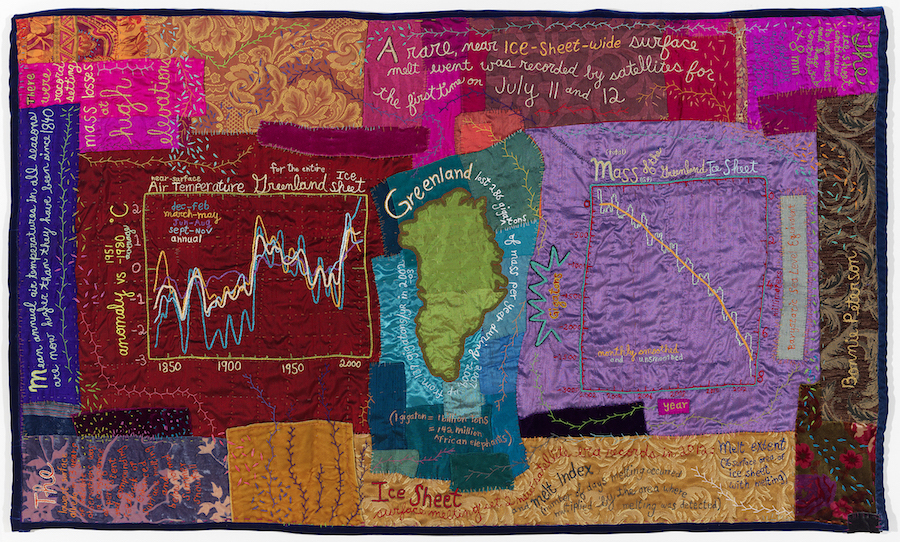
Turning Green (32″ H x 52″ W embroidery on silk) velvet and brocade illuminate data about the melting of Greenland’s glaciers.
Which sciences relate to your art practice?
My recent projects examine geophysical climate issues in fields such as limnology, atmospheric science, glaciology, and fire ecology.
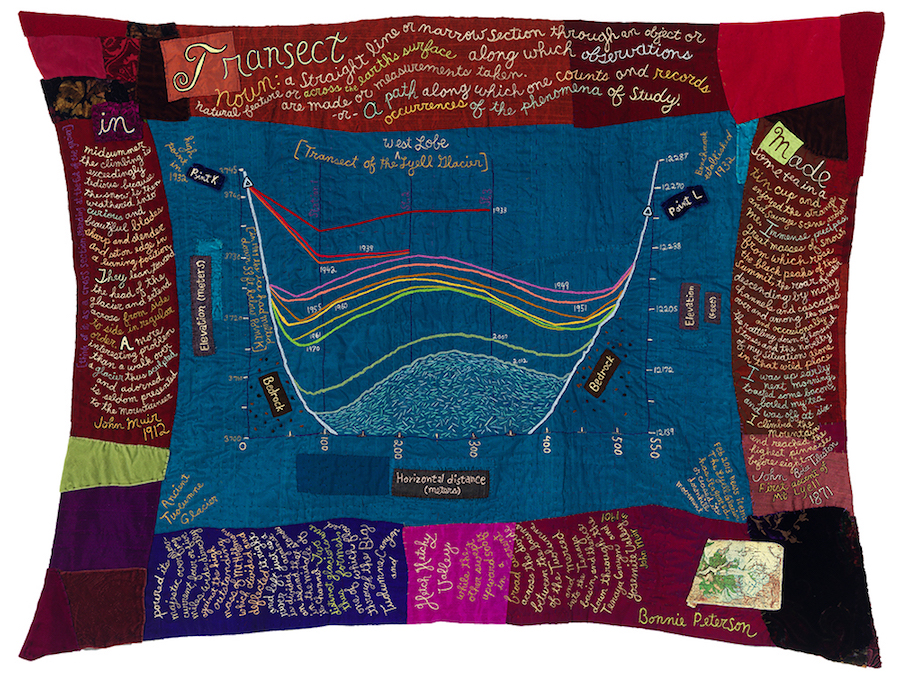
Transect (40″ H x 52″ W, embroidery on silk) explores transect measurements from the 1930’s through 2012 on the Lyell Glacier. The embroidered text contains details about the measurement and historical 1800’s journals relating to this peak from John Boise Tilton who accomplished the first ascent and John Muir.
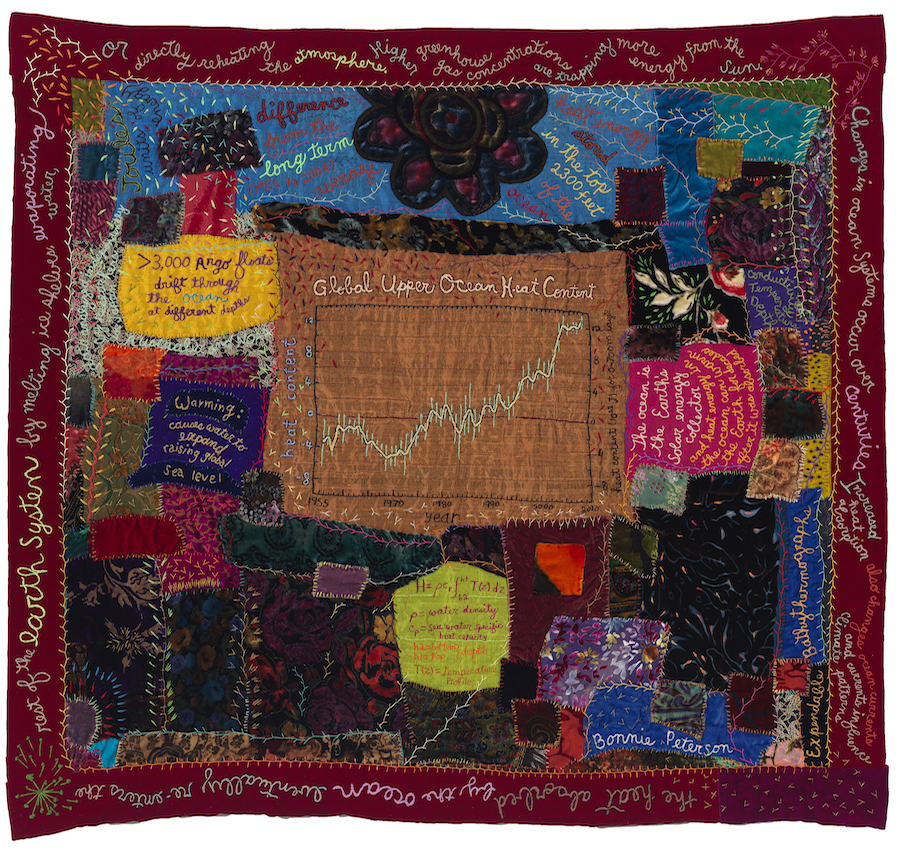
Ocean Heat (38″ H x 41″ W embroidery on silk). Heat content in the top 700 meters of the ocean, data collection tools, and the relevance of heat content to climate science.
What do you use to create your artworks?
I embroider words and phrases on velvet and silk fabrics to make large narrative wall hangings. The process involves an extraordinary amount of independent research. I look for simple explanations for some of the important principles in climate and environmental science, mixing a variety of source materials such as scientific data and early explorer’s journals. Interactions with scientists are a rewarding aspect of these projects and an invaluable resource for interpreting and extracting key concepts and clarifying their context and relevance.
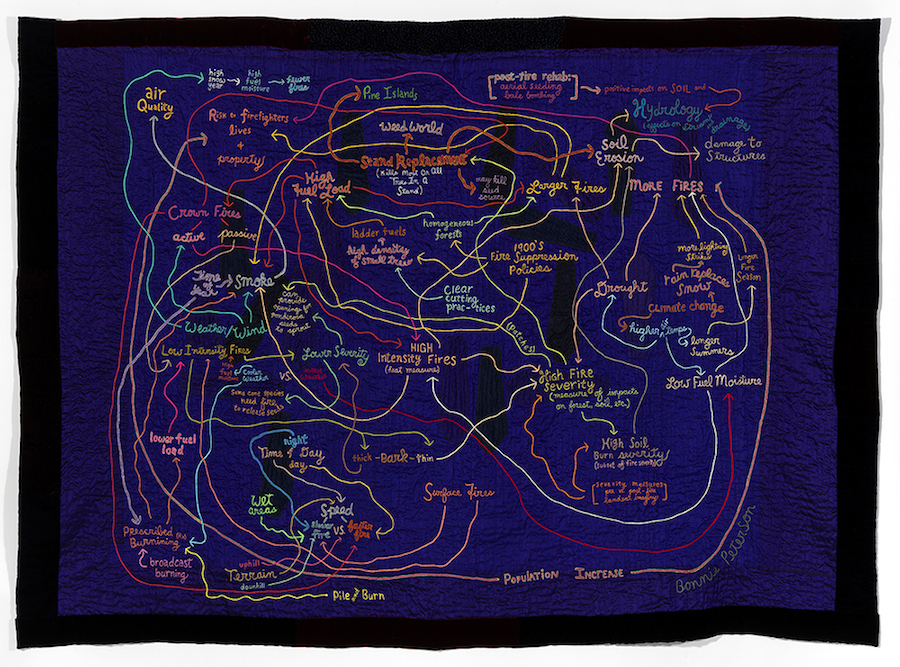
On the Nature of Fire (65″ H x 85″ W, embroidery on silk) explains fire ecology variable interactions.
Artwork/Exhibition you are most proud of:
Fires of Change is the most recent project and exhibition for which I made a very large wall hanging depicting interactions among fire science variables and works on paper using topographic maps. The project brought together 11 artists and 6 scientists on the North Rim of the Grand Canyon and other Northern Arizona forests for a week-long “Fire Science Bootcamp.” The resulting exhibition explores the increase in severity, size and number of wildfires in the Suothwest and their impact on the landscape. It was funded by the National Endowment for the Arts and the Joint Fire Science Program and has traveled thus far to the University of Arizona (Tucson) and the Coconino Center for the Arts in Flagstaff.
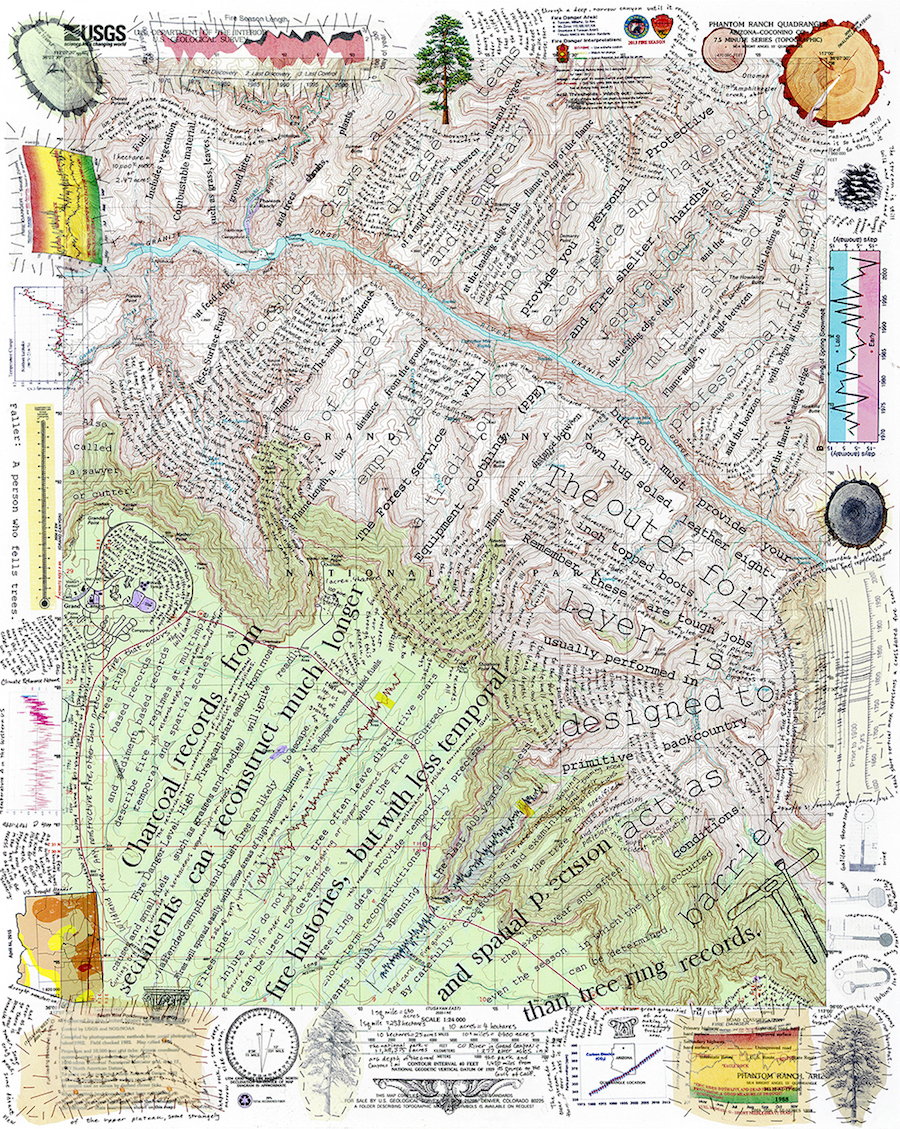
Phantom Ranch Quadrangle (27″ H x 22″ W, silk and heat transfers, pen and stitching on a USGS, 7.5 minute topographic map).
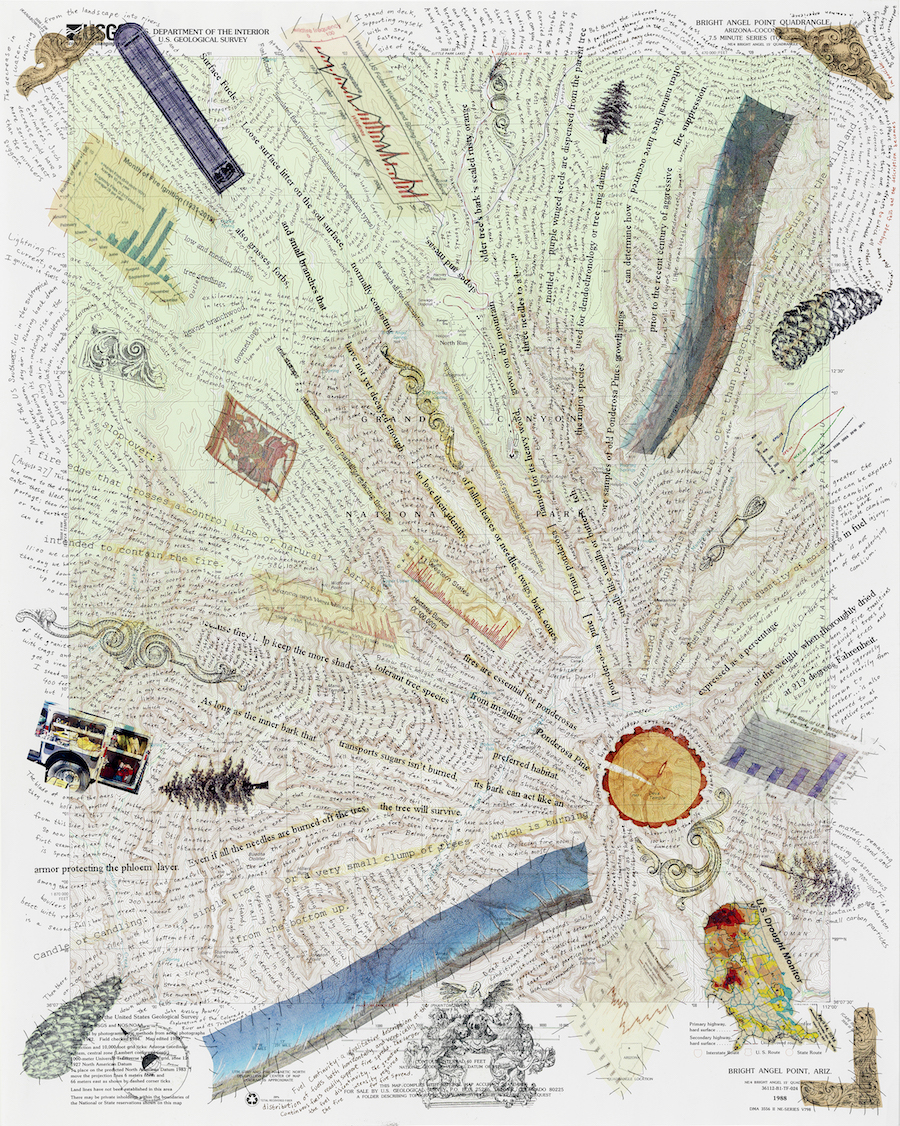
Bright Angel Quadrangle (27″ H x 22″ W framed: 30 x 24) Collage on paper; heat transfers, silk transfers, pen and stitching on a USGS, 7.5 minute topographic map.
Is there anything else you want to tell us?
Fires of Change artists each wrote a single-entry blog about their work, and mine is included.
Several years ago I did a Pecha Kucha in Chicago on my backpacking trip to the Lyell Glacier with the Yosemite Geologist. The youtube video is here:
Share this Post

